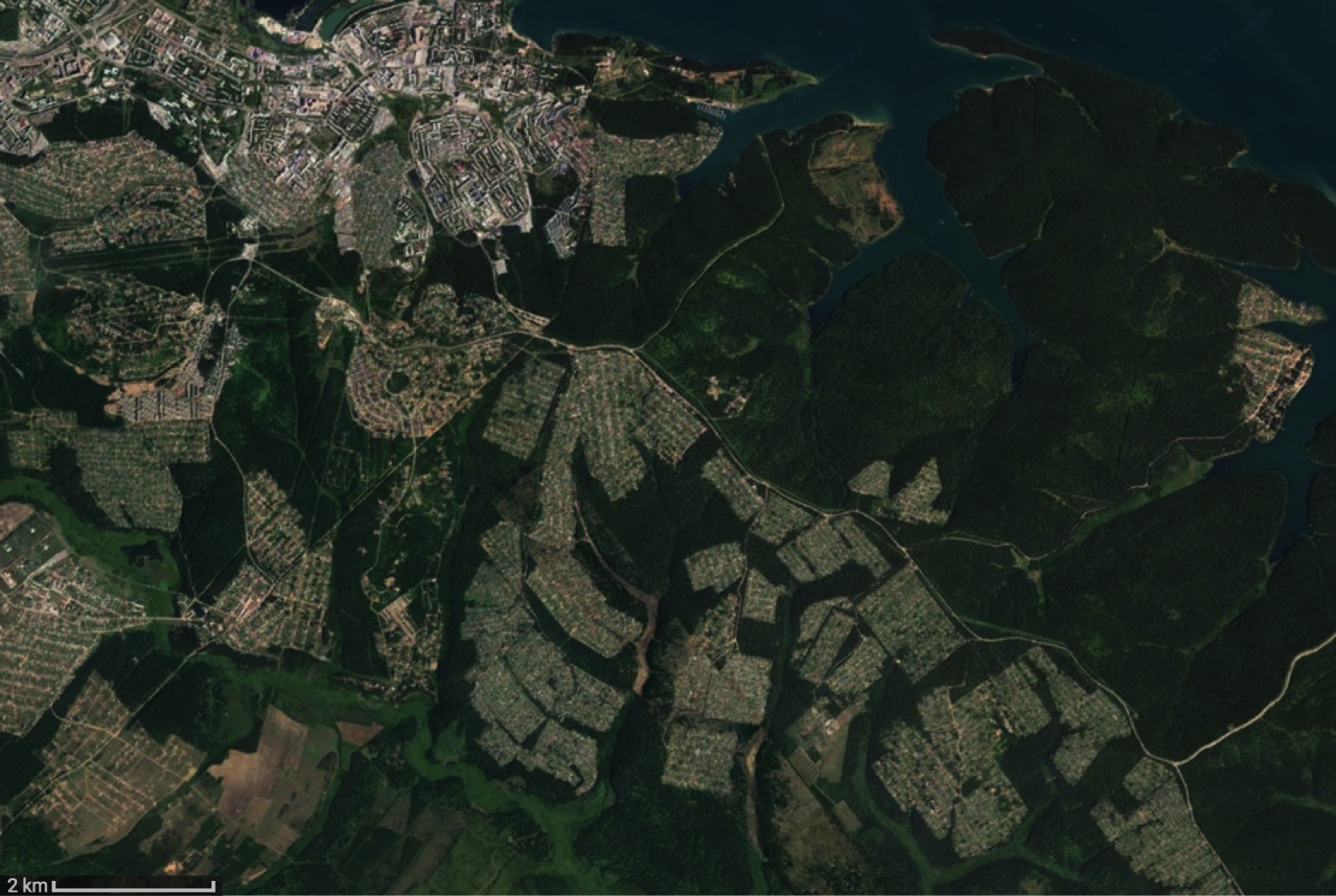Pathway to resilience n ° 6: Evolving towards nourishing agriculture
- 2020-02-01 09:34:30.0
- 14474
- food autonomy
The French agricultural landscape, very diverse until the first half of the 20th century, provided for a large part of the food needs at the local level. Agricultural regions are now largely specialized. At the catchment scale, almost all agricultural production is exported, while almost all food consumed is imported. Relocating the food system to strengthen its resilience requires the development of nourishing and therefore diversified agriculture.
State of Affairs
A loss of food autonomy at all scales
At the end of World War II, the objective of national food sovereignty prompted the development of a productivist agricultural policy. The growth of transport and free trade have allowed agricultural regions to specialize . Some have taken advantage of their climatic and pedological specificities (large cereal plains, wine-growing lands) and others have oriented themselves according to existing infrastructures (port trade and intensive breeding in Brittany, for example). The result was large homogeneous agricultural regions characteristic: cereal growing is today largely dominant in the center of the Paris basin, in Alsace or Aquitaine, while the west of France, devoted to intensive breeding, allocates a place predominantly for forage crops and temporary meadows. This economic rationalization has created a continuous distancing between inhabitants and the lands that feed them, and thus an increased dependence on transport infrastructure and oil .
Although France can be considered as a great agricultural power because of its significant trade surpluses for certain productions (cereals, animal products), there is, however, a loss of food autonomy at all scales. The historical objective is therefore far from being achieved .
Farm-wide
Family farms housed more than half of the French population until the end of the 19th century. The production, generally in mixed farming-breeding, met the majority of the household food needs. Today, farmers represent less than 3% of the working population, and nine out of ten farms specialize in just one type of production. Widespread a century ago, self-consumption has become anecdotal.

Left: Mixed crop-livestock farm (vegetables, cereals, sheep), in Divajeu (Drôme). The farmers feed themselves directly from their labor, and sell their production on the local open market. Generalized a century ago, self-consumption has become very rare. Right: Specialized cereal farm, not directly meeting any food needs of farmers, and exporting all its production outside the bioregion. Crédits : Les Greniers d’Abondance, CC BY-SA ; Pixabay.
At the level of the bioregion
The diversity of the agricultural landscape met a large part of the food needs of the population outside the large cities. Long-distance transport concerned mainly local products such as wine and olive oil, or helped to balance regional surpluses and deficits for cereals and dairy products. The regions now export almost all of their production. Even in areas that retain a certain agricultural diversity, such as the urban area of Lyon, we observe that the vast majority of production is exported, while almost all the food consumed is imported!
At national scale
40% of the French agricultural area is used for exports, while our imports represent the equivalent of 30% of the French agricultural area ( Figure 22 ). Half of the fruits and vegetables consumed in France are imported. More significantly, the country has lost most of its autonomy in vegetable proteins . These correspond to the first import item, mainly from Latin America. Most French farms therefore use products from crops 10,000 km away. This dependence extends to factors of production (see resilience pathways 3, 4 and 11), these being mainly provided by multinationals in the global field of activity.

Figure 22 : Breakdown of gross French agricultural imports and exports, in hectares, by major food category. France is a net exporter of cereals and animal products but has a deficit in fruits and vegetables and in oilseeds. Crédits : © Solagro.
The current food system is therefore based on highly specialized farms and agricultural regions, global supply chains for most of the factors of production (see resilience pathways n ° 3, n ° 4 and n ° 11) and long distribution channels (see resilience path n ° 9). The French regions, despite their significant agricultural production, show low food autonomy . As consumers, our food choices are entirely disconnected from regional geographic and seasonal availability.
Links to resilience ?
Associated threats: soil degradation and artificialization, depletion of energy and mineral resources, economic and political instability
The specialization of agricultural regions has resulted in a reduction in the supply of local products and a distancing from producers and consumers. Our ability to gather the foods necessary for a balanced diet therefore relies on increasingly long and complex supply chains (see path to resilience n ° 9). This results in direct vulnerability to the depletion of oil resources and the risks of crisis affecting the means of transport and / or communication : floods, aging of infrastructure, political or economic blockages ...
From an environmental standpoint, the specialization of farms and territories poses numerous ecological problems, which aggravate certain threats to agricultural production:
- The remoteness of breeding and cultivation areas reduces the recycling of mineral elements (nitrogen, phosphorus, potassium, etc.) from livestock effluents, and in doing so leads to a large waste of resources as well than pollution of water (nitrates, phosphates) and air (ammonia, nitrous oxides);
a loss of biodiversity is observed in specialized agricultural areas, linked to the replacement of grasslands by annual crops, the reduction in habitat diversity, and the abundant use of pesticides;
- the concentration of irrigated crops exacerbates water pressures;
- Specialization is accompanied by a reduction in the number of cultivated species and a shortening of rotations, which creates difficulties in controlling pests;
- specialization, and particularly the shortening of rotations, contributes to the leveling off of field crop yields observed today,;
- In general, areas specializing in a small number of productions are more vulnerable to climatic or biological hazards.
Diversifying crops, on the contrary, guarantees better resilience and greater stability of overall production.
Excessive agricultural specialization is opposed to the modularity of the food system , that is to say the possibility of functioning in relatively autonomous units. Modularity is an important resilience factor, making it possible both to better absorb shocks and to return to a functional state more quickly thanks to cooperation between territories.
Required Transformations
A food resilience project involves returning to nourishing agriculture . The territories must set food self-sufficiency objectives for various staple foods. This implies shifting part of the activity of the farms towards the production of these foods and relocating the factors of production. It is also necessary to protect and enhance cultivable land in and near cities, both for professional agriculture and for family production in substantial volumes.

Openfields in chalky champagne. Significantly relocating consumption is impossible due to a lack of sufficiently diverse production. Crédits : © Yann Arthus-Bertrand.

Diversified agricultural landscape (cereals, pastures, traditional orchards) on the northern piedmont of the Vosges (Reinhardsmunster, Bas-Rhin). A high level of self-consumption is possible at the level of the bioregion. Crédits : © Ministère de la Transition Écologique et Solidaire.
Actionnable Levers
LEVER 1 : Assess the nourishing capacity of a territory
The first step in improving food self-sufficiency at the level of a local government is to know the local production capacity, as well as the consumption needs of the inhabitants. A pre-diagnosis can be made using a simple comparison between the cultivated areas on the land of the community and the needs of the corresponding population. A more in-depth study of the crops to be developed can then be carried out, taking into account the geographical specificities of the bioregion.

LEVER 2 : Promote the diversification of agricultural production in the bioregion Field crop producers can advantageously extend their rotations by integrating vegetables and legumes, and thus diversify their production. Tools and infrastructure adapted to these crops (sowing, harvesting, sorting, storage, processing, etc.) and sized for the expected volumes must also be accessible.
To support this diversification, communities can propose or identify outlets, qualify them, quantify them, or even initiate avenues for contracting, partnership and linking supply and demand. The construction of local marketing channels must also be supported (see path to resilience n ° 9).

LEVER 3 : Use public procurement in collective catering to support certain productions
The public order for collective catering can introduce criteria to make its calls for tenders accessible to local producers (see path to resilience n ° 10). By thus guaranteeing them outlets, the communities support the development of farmers' production routes: rotations, priority crops, varieties, sizes, etc.
LEVER 4 : Develop urban and peri-urban agriculture
Cities and their outskirts are prime areas for small-scale production of fresh fruit and vegetables. The immediate proximity between producers and consumers makes it possible to greatly reduce the need for oil for transport. Limited from a strictly caloric point of view, urban and peri-urban agriculture can however play an important role in food diversification. It contributes to the dynamism and quality of life of the neighborhoods concerned, and makes it possible to raise citizens' awareness of the challenges of food resilience.
Certain "above-ground" urban agriculture projects, expensive and difficult to generalize, based on sophisticated equipment, do not seem a priori to significantly improve the food resilience of the city.

LEVER 5 : Encourage self-production by citizens
The production of fresh fruits and vegetables by the citizens themselves can play a decisive role in the food resilience of a territory. It effectively sensitizes the inhabitants and plays an important social and economic role. Communities can make land available to develop shared gardens, and organize training workshops in gardening.

Side Benefits
The search for better food autonomy makes it possible to better control the social and environmental conditions of food production. In particular, dependence on long supply chains makes it difficult to control the environmental impacts associated with imported products.
A policy of collective participation in food production allows access to quality food for the greatest number of people, in particular for the most disadvantaged households. In Russia, where garden collectives occupy an important place, we notice that collectives:
- reduce the dependence of low-income households on social assistance;
- contribute to the reintegration of people in difficulty;
- strengthen the social bond;
- improve the health and increase the life expectancy of their followers;
- provide a place of leisure and fitness affordable for the majority;
- make it possible to cope with the heat waves of the continental summer, by minimizing the effect of an urban heat island, and by providing a place of life adapted to the hot season.
Obstacles
Agricultural potential of the bioregion
Not all areas are suitable for all agricultural production, which may be more or less well adapted to the soil and the local climate. Difficult territories such as high altitude regions must be able to benefit from the solidarity of regions which are naturally more favorable to diversified agricultural activities. However, the majority of the French population lives in regions that can accommodate most basic productions.
Competition between cultures
Non-food agricultural products (alcoholic beverages) or those meeting the specifications of Protected Designation of Origin (PDO) and Protected Geographical Indication (PGI) can have significant added value (economically or culturally). Many areas are sometimes allocated to them in the same territory. It is advisable to develop agricultural diversity as much as possible for the remaining areas.
Urban pollution
Urban food production projects can be hampered by soil degradation and pollution. In the case of the rehabilitation of brownfields, for example, studies must be carried out to ensure that there are no health risks for future producers and consumers.
Indicators
- Match between the needs of the inhabitants and local production
- Area of allotment gardens per inhabitant
- Quantified inventory of the origin of purchases (department, neighboring departments, France, European Union) in public catering


